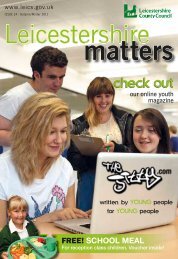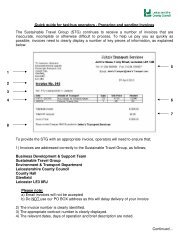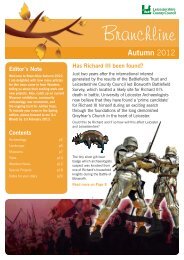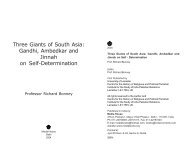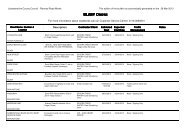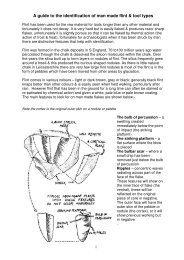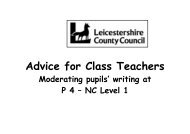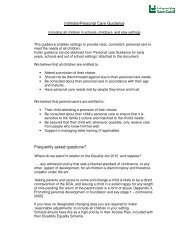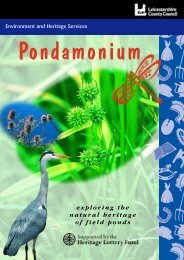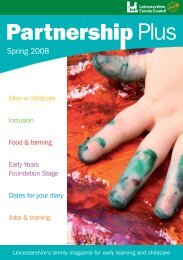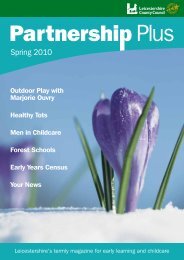Creative Writing Exercises - Leicestershire County Council
Creative Writing Exercises - Leicestershire County Council
Creative Writing Exercises - Leicestershire County Council
Create successful ePaper yourself
Turn your PDF publications into a flip-book with our unique Google optimized e-Paper software.
Speaking Object<br />
For this exercise you will need:<br />
What to do:<br />
Section C<br />
Longer<br />
<strong>Exercises</strong><br />
• Write a page of prose on an object. Write in the third person. If this is a challenge for your<br />
participants, then offer a range of subjects that they have to address: physical description,<br />
what they think it’s for, whether they like the look of it…<br />
• Answer the following, either as factual (if you know about the object), or make it up.<br />
- Where did it come from?<br />
- Who did it belong to?<br />
- What happened to it before its first owner?<br />
- What’s happened to it since?<br />
- Is the owner still a haunting presence?<br />
• Write the piece again as if the object spoke about itself (first person, ‘I’ narrative). This can<br />
be a leap for some participants, so you can offer guidance as in the first step, by identifying<br />
aspects about which you would like them to write.<br />
• Compare the two pieces, and see how the tone differs. Which would be best at introducing<br />
the object to someone who couldn’t see it? Which is the most interesting to read? Why?<br />
Variations:<br />
List Exercise • Make up a detailed list of the object’s past owners. Include<br />
occupations, habits, hobbies, family, background, home and origins. Discuss what led you to<br />
these conclusions.<br />
• Write the object’s physical description using some of the imagined information you’ve<br />
written about these past owners. You can consider any bumps and cracks, whether the<br />
object is decorative or functional, what it’s made of, where it was made and how….<br />
Baffling Object<br />
• Describe the object in front of you as if you were a journalist or photographer, without<br />
saying what it is.<br />
Your only concern is that someone who is a long way away is able to picture or identify<br />
it. Do not use metaphor or analogy. You can use similes. Compare different participants’<br />
responses to the same object: what did they focus on, and how effective are the<br />
descriptions?<br />
(For more ‘owner’ and ‘mystery object’ exercises, go to the V&A website.<br />
See Section D – Literature Development in the East Midlands.)<br />
<strong>Exercises</strong> given by Peter Rumney and Deborah Tyler-Bennett<br />
117<br />
WORDS<br />
THINGS&<br />
workshops



